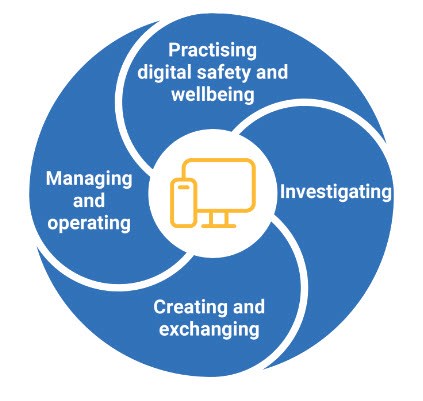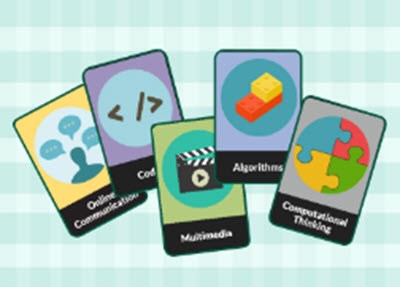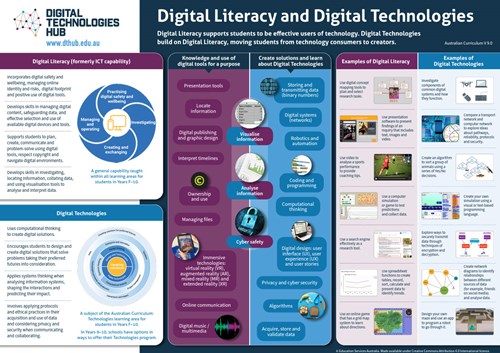Digital Literacy and Digital Technologies
A topical question and key consideration for schools is what’s the relationship between Digital Literacy (formally ICT Capability) and Digital Technologies and how they differ. The following resources can help clarify this.
Difference between Digital Literacy and Digital Technologies
Check out this infographic describing the differences between Digital Literacy and Digital Technologies.
Download the PDF here or view above.
For infographic describing the differences between ICT Capability and Digital Technologies, Australian Curriculum V8.4, download the PDF here.
Digital literacy encompasses the knowledge and skills students need to create, manage, communicate and investigate data, information and ideas, and solve problems.
Digital literacy involves students critically identifying and appropriately selecting and using digital devices or systems and learning to make the most of the technologies available to them.
The Digital Literacy learning continuum is organised into 4 elements:
- Practising digital safety and wellbeing
- Investigating
- Creating and exchanging
- Managing and operating.

Browse the curriculum for the Digital Literacy general capability.
For information about this general capability refer to Understand this general capability: Digital Literacy.
Use these cards in planning teams or professional learning to promote discussion around Digital Literacy and Digital Technologies.

- Download the 2020 Typology of Free Web-based Learning Technologies. The Typology of Free Web-based Learning Technologies (2020) provides educators with a list of 226 technologies arranged into 40 types and 15 clusters that can be used via a browser to promote more productive and interactive learning.
- Digital Learning selector: This tool provides access to innovative tools and activities to enhance your lessons to support Digital Literacy.
